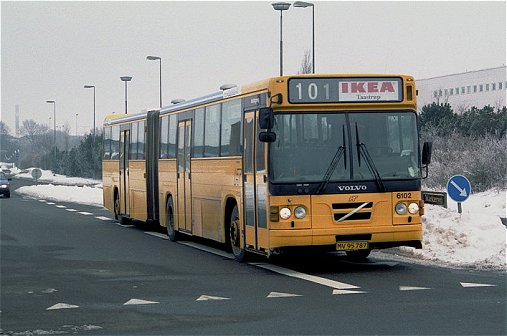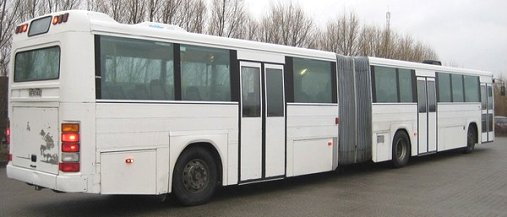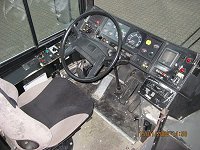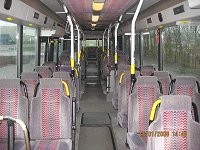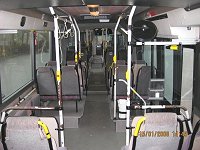The Volvo B10MA is a popular articulated mid-engined bus and coach chassis built by Volvo between 1979 and 2001 in four different versions. The Mk. III was in production from 1988 to 1993. It was built as the successor of the B10M Mk. II and was basicly identical with this. The main difference being a new series of 9.6-litre horizontally-mounted diesel engines, which was still placed under the floor between the two axles. Due to the low height of this engine, it is often nicknamed the 'pancake engine'.
A large portion of B10M chassis was built in Sweden, but some chassis were built in other countries such as the United Kingdom, Brazil and China.
It was one of the most successful and reliable of all the buses built for the United Kingdom in the 1980s and 1990s. It started off as a coach chassis and found instant favour with Shearings, Wallace Arnold and Park's of Hamilton.
In the 1990s, Stagecoach standardised on the bus version of B10M as their full-size single decker and they are still going today. Most of them had Alexander PS bodies but some were delivered with Northern Counties Paladin bodywork. They also took numerous examples of the coach version with Plaxton's Interurban bodywork and Jonckheere's Modulo bodywork. South Yorkshire Transport (Mainline Buses) and Kelvin Central Buses (both companies are now subsidiaries of the First Group) also purchased large numbers of the type with Alexander PS bodies.
The coach version of B10M is also highly popular among UK coach operators, with hundreds of them seen on the motorway everyday.
Singapore Bus Services of Singapore has purchased a total of 967 units, making up a large part of its bus fleet. First delivered in 1988, they are bodied by Duple Metsec and Walter Alexander. A single 19m B10MA articulated bus (registered as SBS 998Y) has also been built, but it has since been sold to New Zealand in 2006.
From 1983 to 1986, The B10M was also made for use in the US at a Volvo plant in Chesapeake, Virginia. The American B10M was manufactured mostly in its articulated form (which was purchased by SEPTA, SamTrans, and New Jersey Transit) though a standard length B10M model was made for the RIPTA with one example going to SEPTA as compensation for delays. Canadian production of the B10M articulated under licence to Ontario Bus Industries nearly took place, however it fell through when that company negotiated a more favorable deal with Ikarus Bus.
The double-deck version of B10M, i.e. Citybus, was replaced by the Volvo Olympian in 1993. The B10M as a single-deck bus was supplanted by the low-floor rear-engined B10L and B10BLE chassis in some markets in the late 1990s. In 2001, the B10M was eventually replaced by the new Volvo B12M and Volvo B12B, both chassis sporting a larger 12-litre engine.
Sources: Volvo Bus & Coach Website

